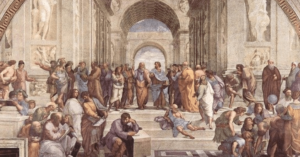Block 1: Foundations of Learning
Unit 1 : Learning and Instructions
Explain the differences between ‘learning’ and ‘instruction’.
Describe the general characteristics of distance learners. Explain the importance of analysing the needs of learners for designing instructional materials.
Explain the concept ‘instruction. Discuss Merrill’s principles of instruction with illustrations.
Define the term ‘instruction’. Discuss the four levels of designing instruction.
Define the term ‘instructional design and state the purposes of instructional design models in distance education.
Explain the concept ‘Instructional Design’. Discuss the purposes of instructional design in open and distance learning and describe the tasks involved in instructional design.
Discuss Piaget’s contribution towards the theory of learning.
Explain the instructional design model of Smith and Ragan.
Can we use the terms ‘Curriculum design’ and ‘Instructional design’ synonymously ? Substantiate.
Illustrate Bruner’s theory of instruction.
Describe the roles and responsibilities of an instructional designer while designing instructions for distance learners.
What is learning? Behavioural Change, Cognitive Development, Constructivism, Basic Conditions, Approaches to learning (deep and surface)
Learning is a fundamental process underlying human behaviour and action. It could be about knowledge, skill or attitude. It is not directly observable and hence is inferred from a performance. Learning be defined as a relatively permanent change in behaviour as a result of reinforced practice (through a process of stimulus and response) or experience.
Learning is about cognitive development it is a change in cognitive structures which involve an acquisition of knowledge, skills, attitudes and value through practice or experience. This cognitive change might not be expressed in overt behaviour.
Learning is about constructing new realities through acquired knowledge, skills, attitude and values gained by practice or unique experience. Learner actively seek construction of its own understanding (new version) of reality through a learning process. It is the construction of this new version of reality that forms the basis of further learning. Constructivism or constructivist learning is about elaboration of concepts that are operating in reality (in a given context) through questioning, critical analysis, and application of the concept and by reflection in action. Learning constructively needs active processing of information, performing experiential activity, analysing life experiences, solving problems, examining mental framework, exploring belief systems and assessing one’s own learning. Existing mental framework and learning need is the agent in the interpretation and construction of knowledge.
Social constructivism focuses on moving the fact that the learner has a role to play in its own learning. It is not just an act of transmission of knowledge or skill or attitude or values. Social interactions are the basis of scaffolding when applied acts as the purpose of facilitation of learning process.
Basic Conditions : Contiguity, Practice, Reinforcement, Feedback, Generalisation and Discrimination.
Approaches: Deep and Surface
Perspective of Learning: Learning is a process (social, situated)
Instruction: human activity to help others to learn to accomplish a specific goal of learning. Based on the goal, the content is designed including the events or print. It activates human learning process. Five principles of instructions are (i) Learners engage in solving a problem (real world) (I) existing knowledge acts as a foundation for a new one (iii) new knowledge is demonstrated by the learner (iv) new knowledge is applied (v) new knowledge is integrated into learner’s world.
Learning and Instruction: Learning is modification or changes in behavior, cognition and construct (understanding existing and establishing its own unique interpretation of a new reality) based on the acquired new knowledge, skills, attitudes and values. The change is reinforced through practice and experience. Instruction is a pre-planned activity to facilitate the learning process and includes set of external events (such as gaining attention, informing learning objectives, stimulating for pre-requisites, presenting stimulus material, providing learning guidance, eliciting performance, providing feedback, assessing performance, enhancing retention and transfer) directed forwards leaners to activate and support its internal processes of learning. Events help them achieve the agreed or intended objectives or learning outcomes.
Unit 2: Behavioristics School of Thought
Describe the applications of Behaviouristic school of thought in designing instruction for distance learning.
What is ‘Behaviourism’ ? Discuss the applications of Behaviourism for designing instruction for distance learners. support your answer with examples. As
Behavior Change – Psychologists – Pavlov, Thorndike, Watson, Skinner. Stimulus – Response w/o Reinforcement (Pavlov – Classical Conditioning & principle (Rein, Seq & TimIin, StiGen, Diff, Ext, SpoRec, Inhi-Ex-In, HigOrdCon, SecRein, AgeCond)- {CS, US, UR, CR} {(US, Meat) ->(UR, Saliva), (CS,Bell) + (US, Meat)-> (UR, Saliva), (CS, Bell) -> (CR, Saliva)} , Watson, Guthrie), Stimulus-Response with Reinforcement (Thorndike, Hull, Skinner).
Pavlov, Watson. Guthrie (S-R w/o r)
Pavlov’s principles of classical conditioning as implied for designing instructions are : assessment of the entry behaviors of the distance learners before designing instructional materials. statement of learning objectives that decides what to present and how to assess student’s learning, analyze what involved in the learning task of distance learners, develop a sequence of learning tasks that move from the simple to complex, design assessment strategies to measure student’s learning in relation to stated objectives, use guidance, feedback and rewards to reinforce the key points of learning and the process of learning.
Watson: Extended Pavlov’s work. Human activities can be explained as learned habits. This work is summarized as S-R (Stimulus-Response Theory). Learning is a process of building conditioned reflexes through the substitution of one stimulus for another. He defined human beings in mechanistic and behavioristic terms.
Guthrie’s theory of association by contiguity: Impact of reward, function of punishment, importance of practice
Thorndike, Hull, Skinner (S-R w r): Reinforcement, Law of Effect, Law of readiness, low of exercise
Educational implications of thorndike’s theory of connectionism – ODL to make sure students are ready to receive the knowledge mentally, examples for experiences of satisfaction through learning (course material organized from simple to complex) else dissatisfaction when failed to learn could lead to creating a blockage in the path of learning, more opportunities to be provided to the students to use and repeat the experience they undergo while studying the materials.
Skinner and Operant Conditioning – Operant, baseline behavior, unconditional stimulus, shaping, continued reinforcement, negative reinforcement, positive reinforcement, extrinsic reinforcement
Gagne’s Learning Theory: systematic approach to instruction, process in learning, conditions (internal -states = attention+motivation+recall, external=factors surrounding one’s behavior including arrangement and timing of stimulus events), five major categories of human capabilities (verbal information, intellectual skills, cognitive strategies – inductive and deductive reasoning, attitudes, motor skills), eight types of learning (SL, SRL, CLC, VAL, MDL, CL, RL, PS). Gagne’s theory of conditions have several implications for instructional design (AR, SM, DE, MI)
Social Learning Theories: Controlled lab experiments,
Unit 3: Cognitive School of Thought
Discuss the techniques of cognitive task analysis with suitable examples.
What is Cognitivism ? Discuss the contributions of cognitivism for designing instructional materials in open and distance learning.
Unit 4: Constructivist School of Thought
Write the educational implications of ‘Constructivism’ for the design and delivery of instruction.
Discuss the constructivist theory of learning in the context of distance learning. Differentiate between the constructivist and behaviourist theories of learning.
‘Constructivism is a theory based on observation and scientific study about how people learn.’ Justify this statement and explain how constructivist learning can be used in designing instruction for open and distance learning (ODL).
Block 2: Instructional Design Theories and Models
Unit 1: Instruction Design : An Overview
List Gagne’s steps of instruction. Discuss their implications for instructional design. Explain Gagne’s nine steps of instruction. Discuss briefly their implications in designing instruction.
Explain the implications of instructional psychology on instructional design
Differentiate between general and specific instructional objectives. Explain the SOLO Taxonomy of learning outcomes.
Differentiate between Structure of Observed Learning Outcomes (SOLO) and Bloom’s taxonomy of learning outcomes.
Differentiate between ‘aims’ and ‘objectives’. Discuss how learning outcomes are formulated while designing a self-learning unit for distance learners.
Describe the concept ‘Learning Outcome’. Explain the three components of learning outcomes with suitable examples.
What is the significance of assessing specific needs of designing a curriculum in in ODL.
Unit 2: Component Display Theory
State the conditions of motivation in learning with the help of Keller’s Motivation Design Model.
Discuss the fundamental component of ARCS model of motivation of Keller.
Describe the theoretical foundations of the four-component instructional design model. Discuss their implications for designing instruction.
Unit 3: Elaboration Theory
Discuss the components of Elaboration theory.
Unit 4: Cognitive Load Theory and Cognitive Flexibility Theory
Explain different types of cognitive loads. Describe how it affects the instructional design.
Explain the different steps of Dick, Carey and Carey (2001) model in instructional design. Support your answer with illustrations. Discuss how these steps could be customized to design printed learning materials.
Explain the types of cognitive load theory.
Differentiate between intrinsic cognitive load and extraneous-cognitive load used in cognitive load- theory (CLT).
Discuss the principles and implications and applications of cognitive flexibility theory used in instructional design.
What is cognitive view of learning ? Discuss the implications / applications of cognitivist approach for designing materials for distance learning.
Unit 5: Theory of multiple intelligence
Explain the various components of multiple intelligence. Discuss their implications for designing instruction with examples.
Discuss the implication of multiple intelligence theory in designing instruction.
Discuss the implications of multiple intelligence theory for distance education.
Discuss the salient features of Gardner’s theory of multiple intelligence.
Unit 6: The 4C/ID Model
Write the educational implications of four component/ instructional design (4-c/ID) model.
Discuss the ten steps for the four – component (4C) instructional design model. Explain their implications for designing a unit for self-learning
Describe the process of systems approach followed in distance learning.
Block 3: Instruction Design Processes
Unit 1: The ADDIE Approach
Explain the different phases of ADDIE approach to instructional design with an illustration.
Identify the steps in, the instructional design process and implement them to design distance teaching materials. Support your answer with a sample of unit design.
Explain the systems approach to course planning with the help of an appropriate illustration.
List the steps involved in Rapid Prototype Instructional Design (RPID).
‘The role of distance teacher is more challenging than the conventional teacher.’ Do you agree with this statement ? Explain how a distance teacher can overcome these challenges through instructional design.
List the steps involved in analysis phase of iinstructional design for training.
Unit 2: Learner’s Characteristics and Learning Styles
Discuss various learning styles and their characteristics. Explain their implications for designing instructional events in distance teaching materials.
Differentiate between the deep and surface approaches to learning.
Discuss the characteristics of distance learners. Justify why an instructional designer has to consider these characteristics while designing instructional materials.
What is learning style? Describe the Dunn and Dunn learning style model. Discuss its implications for designing instruction.
Discuss the Myers-Briggs Type Indicator (MBTI) for assessing learning styles of the distance learners
Discuss major principles which play crucial role in facilitating learners to construct their own knowledge. Explain how these principles can be used in instructional design for ODL system.
Discuss the need of learner analysis in designing instruction. How can learner analysis be undertaken ? Explain with examples.
Describe the typical characteristics of a learner, who adopts the ‘deep approach’ to learning.
Analyse the distance learners on the basis of learning styles.
Unit 3: Designing Learning
Describe David Kolb’s experiential learning cycle with the help of illustrations
Describe the ‘analysis’ phase of designing a training programme in open and distance education system. Support our answer with suitable examples.
Describe the characteristics of Problem- Based Learning (PBL) and discuss the four key stages in the design of problem-based learning tasks.
Discuss how a self-learning unit is designed with the help of an example of a sample unit choosing a subject of your own choice.
What is a ‘story board’ ? Describe the basic components involved in writing a story board.
You are asked by a distance education institution to write a self-learning unit for distance learners. Prepare a self-learning unit (print) selecting a topic from your discipline and state the level and target audience.
You are asked by a distance education institution to write a self-learning unit (print). Prepare a self-learning unit selecting a topic from your discipline and state the level and target audience.
Unit 4: Development of Learning Resources
Define the term ‘learning resources’. Discuss the processes of designing learning resources which are inclusive as well as accessible.
Describe the process of designing a unit for self-learning print materials. Critically discuss the need for self-learning print materials in distance learning.
Discuss the advantages of handouts as learning resources.
Discuss different types of handouts. Explain the guidelines followed while designing handouts for distance learners.
Describe Ausubel’s information processing model of learning. Discuss the contributions of Ausubel’s theory for designing distance learning materials.
Discuss the ways to address learner’s diversity through distance learning material.
You are asked to design distance learning materials for distance learners. Develop a self – learning unit (print), selecting a topic from your discipline.
Discuss the factors which influence selection of appropriate learning resources in open and distance learning.
Discuss Bloom’s taxonomy of learning. Explain its contributions to the design of distance learning materials.
Discuss various types of learning resources. Select any topic of your choice and develop handouts for distance learners.
Discuss information processing theory and its implications for designing materials.
Discuss the three phases of PIE (Planning, Implementation and Evaluation) approach used for designing instructional materials in open and distance learning.
Discuss the processes involved in the design of print materials and multimedia materials with particular reference to e-content.
Suppose that you have recently designed a programme in your field of specialization to be offered at a distance. Now you are being asked to develop a plan for the design, production and evaluation of additional resource materials. Explain the processes involved in this task.
Discuss the significance of access devices in self- learning materials.
Unit 5: Evaluation of Learning
Discuss the Kirkpatrick’s Evaluation model. Explain any one level with the help of suitable examples.
Explain the various techniques of assessment of student’s performance in the context of open and distance education system.
Differentiate between formative and summative assessment in Open and Distance Learning.
What are the different techniques used for student assessment ? Give examples of different types of objective tests.
Differentiate between norm-referenced and criterion referenced tests.
Describe the four levels of Kirpatric model of student assessment.
Discuss the characteristics of a good tool of evaluation.
Explain variety of exercises in distance learning materials with suitable examples.
Discuss the purposes of assessment of Student’s performance. Discuss different types of assessment of Student’s performance in open and distance education.
Discuss the various types of assessment and suggest the ways to improve the validity and reliability of assessment.
Critically evaluate the concept of systems approach to curriculum design in ODL.
Block 4: Instructional Design In Practice
Unit 1: Instructional Design In Classroom
Classroom Instructional Environment – classroom instructional environment, teacher, learner, learning experience, method, media and assessment strategies
Three levels of ID: detail specification of situations that facilitate learning (course design), process of analysis of learning needs and development of delivery system for learning (unit design), systematic reflective process of translating principles of learning into lesson plans (lesson design/planning). These three levels of ID finally lead to learning experiences to be delivered in a classroom environment.
Analysis of Syllabus – Unit designing (subject, unit, target group, entry behavior, major objectives of the unit – teaching points and specific objectives, overview of the theme, details of the unit design (or sub-units), references, evaluation or assessments – quiz and assignments) + method + media + Approach
Daily lesson planning – content analysis, formulation of instructional objectives, how to formulate instructional objectives, selection of instructional methods, selection of media, media and method integration, evaluation strategies
Implementation of the lesson plan – warm up, development and closure or summation phase
Unit 2: Instructional Design in Training
Differentiate between ‘Education’ and ‘Training’.
Critically examine the need of analysis phase for developing instructional design for training. How will you use the information collected from analysis in designing training ? Discuss with examples.
Difference between education and training : { (formal, informal), (IS, Non-IS) , (GOO, BOO), (GD, AD), (LTP, STP), (OTP, OTJ), (Organic, Mechanistic), (Theoretical and Conceptual – High, Low) , (Wide Audience, Specific Audience), (Unspecified Behavior, Specific Behavior), (Professional Instructors, Most NPI), (May or may not directly applicable, direct and immediate application)}
ID for Training Phases: Analysis (context, job, task, gap, cost, learner), Design (prepare TO, Organize TC, Design IS [P, RP, Discussion, Demo, Tutorial, Case Study, Problem Solving], Select TM & Media [K,S,A], Design AS) , Development (prepare P, Prepare Activities, tests etc, prepare IM, Prepare TS), Implementation (Administrative coordination, conduct of training) , Evaluation
Unit 3: Instructional Design in Distance Education
Discuss the stages of information processing model.
Discuss the ‘ASSURE’ model of instructional design.
Why ID for DE? : Distance, Role
Curriculum Design : ID for Curriculum Planning (CP), System Approach to CP
ID for Self Learning Print Material
AV Material in DL
Designing F2F counselling session
Assessment in DE
Unit 4: Instructional Design in Multimedia
Describe the factors determining the selection of different types of media in distance education. Enumerate the factors determining the selection of different types of media in distance education. What are the principles in the selection of media while designing instruction ?
Describe the contributions of theories of learning for designing multimedia
Describe the theoretical foundations of designing multimedia. Discuss the various components of instructional design in multimedia.
Describe the components of instructional design in multimedia. What are its implications in developing multimedia ? Explain with suitable examples.
Describe the steps involved in designing instruction through multimedia.
Discuss the guidelines followed by an instructional designer while designing multimedia for distance learners.
Do you think the multimedia approach to learning will help in catering to the differing learning styles of the learners ? Substantiate your answer with illustrations.
What is multimedia? Explain how different theories of learning contribute for designing multimedia for distance learners.
ADDIE Model for IMM
Unit 5: Instructional Design in E-Learning
State the instructional strategies for e-learning.
How do you describe e-learning and essential elements for designing e-learning course for distance leaners with examples ? Discuss the different types of e-learning and the steps involved in designing e-learning materials.
Describe the steps involved in designing e-learning.
Describe the features/attributes of e-learning.
Describe the different phases of designing e-learning. Support your answer with illustrations.
Discuss the skills required for participating in online discussion group.
What is meant by story bonding in the context of instructional design ?
Suppose that you have been given an opportunity to design a Bachelor’s Degree Programme in your discipline for distance learners. Which of the ID models would you select and why ?
What is a storyboard? Discuss its significance in designing instruction. Develop a story board selecting a topic of your choice for distance teaching.
Describe the major principles which play a crucial role in facilitating distance learners to construct their own knowledge. Explain how these principles can be used for designing instructional materials for distance learners.
Describe the role of an instructional designer while designing instructional materials for distance learning.
Describe the role of an instructional designer while designing instructional materials for distance learning.
Phases of Designing E-Learning ID: ADDIE : Analysis ( Needs, Learners, Content, Technical), Design (LO, EB, IS + LO, IS + ODL, Plan Media, Design Assessments, Design Interfaces), Development (Authoring, Storyboarding and prototyping, QA), Implementation, Evaluation.
Block 5: Meaning and Purpose of Portfolios
Unit 1: Portfolios : A Review
Unit 2: Design and Development of Portfolios




